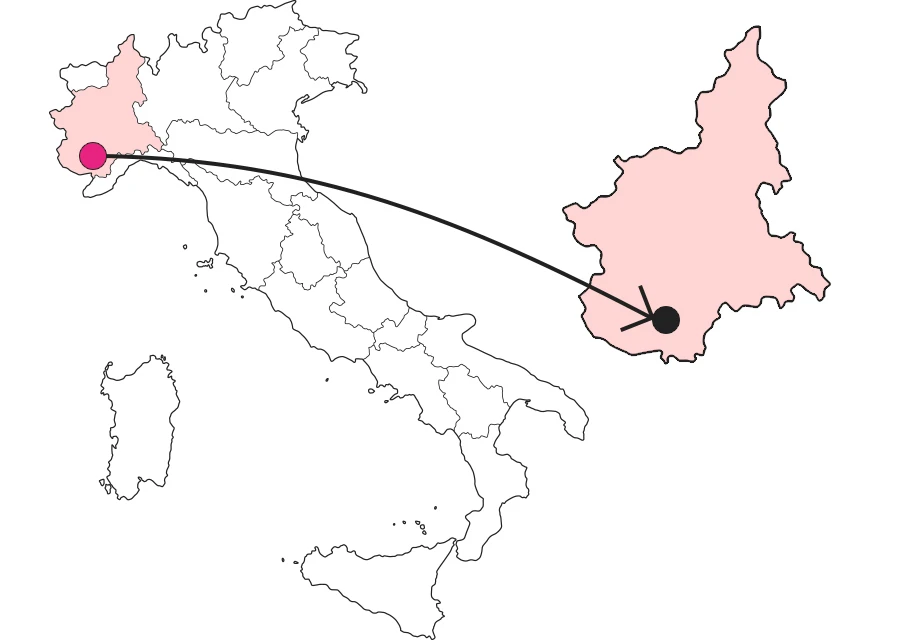








Occitan music
It cheerfully enters the soul and makes every muscle move to the rhythm of dance


Where

Ancient sounds, the harsh fifes, the magical vibrations of the hurdy-gurdy, the poignant melody of the "semitoun"... They dance, elderly couples with eyes full of light, young people in colorful dresses, energy barely restrained by dance steps...
An ancient music that is always new
If this kind of art seems outdated to you, remember that, as the Frenchman Paul Veine said, "A tradition is truly dead if you defend it instead of inventing it" That's why our music is more alive than ever! It allows itself to be invented every day, welcomes basses and electric guitars, drums and didgeridoos... It gets rock and displaces you with a hurdy-gurdy solo, makes the bass vibrate in your belly and launches you onto the dance floor with the "semitoun."
 The semitoun, the little accordion of Occitan tradition.
The semitoun, the little accordion of Occitan tradition.In the whirlwind of the dance
And when the pace gets so fast, you can't escape the Circassian Circle, the dance that everyone dances to: an imposing, tasking gentleman lifts me from the waist, whirls me around and greets me with a reverence, and then ... change checkers! A boy with dreads and an earring guides me confidently, and with a pirouette switches to a bon ton lady with a string of pearls and a black skirt... Truce! Here it takes a cold beer to put out the breath before I feel it: two-stroke Bourrè... Yes, I can do it!
The lands, the people and the culture of the oc
Occitan music is linked to the lingua franca, which unites and makes a unique people dance and sing across borders and mountains that from barriers become a bridge. From the upper Susa Valley to Catalunya (Spain) via the Cuneo valleys and Provence, people recognize each other in sounds and words, in leaps and weaves that end in a smile. The term "Occitania" comes from "oc, " a word that meant "yes" in the language common to these places. Another possible etymology comes from "occasum, " meaning sunset, since the lands referred to are, precisely, the most western.
 The flag of Occitania
The flag of OccitaniaIt is always a good time to dance
In the province of Cuneo we dance all year round, and those who don't dance can get swept away by the music into fairy-tale reveries, but I don't think it's possible to sit still for long! There is no festival, fair, patronal festival or event without at least a couple of players. Performances can be in the afternoon to engage the fair audience between tasting and buying, or they can become a "Gran Bal" that begins in the evening and continues late into the night. Our music is always a marvel, in summer dancing under the stars and dreaming while looking at the mountains. In winter, immersed in the enchanted atmosphere of the Christmas markets, we warm up jumping to the rhythm of Courento in the scent of "moundaj," roasted chestnuts, and mulled wine.
 The hurdy gurdy, its sound makes you dream from the valleys of Cuneo to Catalonia
The hurdy gurdy, its sound makes you dream from the valleys of Cuneo to CataloniaThere are so manyevents to immerse yourself in. Among the most beautiful are surely the 'Uvernada in Saluzzo, during the last weekend of October, where lute-makers converge to exhibit unique pieces, sometimes copied from ancient frescoes, and extraordinary performers from all corners of Occitania; but also the St. Marcelin Fair, in Macra (Maira Valley), with the participation of the Grande Orchestra Occitana. Then what about the Occit'amo festival, which every summer offers concerts and lectures among the Stura, Maira, Varaita, Po and Infernotto valleys. Or even or the Roumiage of Coumboscuro, in the Grana Valley, at the major study center of Oc culture, the Gran Tapage, at the Varco auditorium in Cuneo and the Ferragosto Concert in Castelmagno, with the Lou ... and there would be so many more to remember! Really, don't worry about the date, or the exact location: this music is so disruptive and upbeat that it comes up again and again, at all times of the year and in many locations. To find your way around the various events and concerts, you can consult the area's digital newspapers or, on the street, spot the colorful posters with the celebration schedule. Want to play it safe? At the Carpenterie Musicali in Vicoforte, near Mondovi, you can attend live concerts and participate in dance workshops.
Past and present come together in music
Occitan music derives from the tradition of the Trobadors of the (12th) century, composers of "mots et son" that is, set to music poetic texts, mostly with a love and nostalgic theme. The compositions were performed by "Jogladors," storytellers, to the accompaniment of hurdy-gurdy, bagpipes, and fifes. These instruments have come down to us through tradition, written or pictorial documents, and still make those who hear them enthuse and dance. Just think that, during the most engaging Occitan music events, one can see Sergio Berardo, leader of Lou Dalfin, playing a "Chabreta," a white bagpipe made from a remarkably large goatskin. It is a faithful copy of the one painted in the church of St. Peyre in Stroppo (Maira Valley) in the 15th-century depiction of the Nativity.

